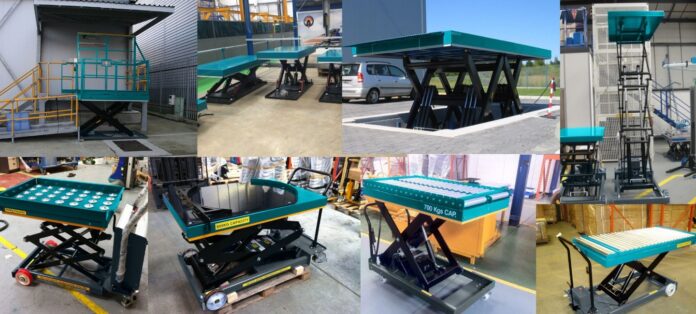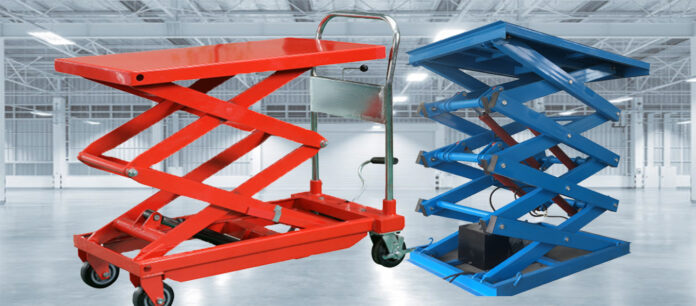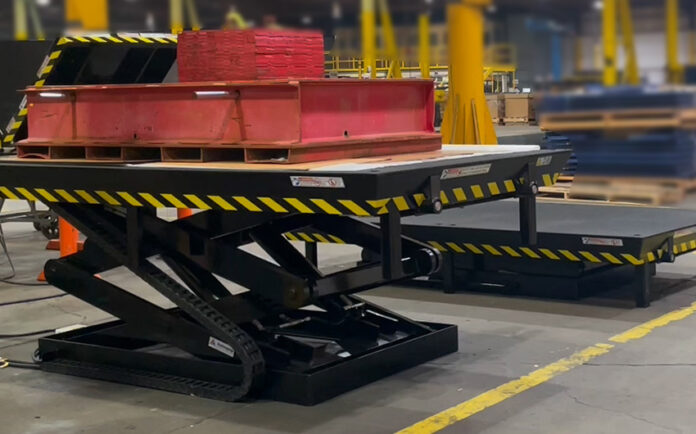Streamlining operations remains a crucial goal for every industry. In industries such as warehousing, this often comes down to choosing the right types of equipment. This will not only ensure employee safety but will get lifting and moving job functions done efficiently.
Many warehousing operations are relying on a hydraulic lift trolley in their arsenal of efficient equipment. These versatile machines are primarily used to lift heavier or larger items to and from varying heights.
Warehousing operations strive for efficiency by selecting the right equipment, like hydraulic scissor lift tables. These versatile machines excel at safely lifting and moving heavy or large items to and from different heights, contributing to streamlined operations.
Hydraulic scissor lift tables are designed with precision and power, making them essential tools in the warehousing industry. They enhance employee safety by minimizing manual lifting, reducing the risk of injuries, and ensuring consistent, controlled movements. This equipment also boosts productivity by speeding up material handling tasks.
Moreover, hydraulic scissor lift tables are adaptable, accommodating various load sizes and weights. Their ability to reach different heights makes them indispensable for tasks such as loading/unloading trucks, assembling products, or organizing inventory in multi-level storage systems.
In conclusion, investing in hydraulic scissor lift tables is a smart move for warehousing operations seeking efficiency, safety, and versatility in their material handling processes.
Hoist Tasks the Easy and Safe Way

There are several reasons why your warehousing business should invest in the relevant hydraulic scissor lift table for your unique hoisting needs. Is your equipment up to par yet?
Our team of experts have compiled a list of the reasons why you should consider using this equipment to simplify any lifting operations. It’s clearly an investment worth making.
1. Hydraulic Tables are Cost-Effective
Saving money or being cost-efficient is usually the number one criterion to consider before investing in new equipment. Of course, discussions will be about the initial cost of the machine, but also the overall impact on safety and productivity that a particular machine can have.
With that said, it’s important to point out that hydraulic tables are remarkably cost-efficient. Here are the top three ways that hydraulic tables can help manage a budget:
- Machines are durable and accurate, meaning that work is done effectively the first time around.
- Employers can look forward to a higher level of employee safety, with fewer injuries and costs related to accidents.
- Getting more work done in a shorter period increases productivity.
2. Ensure Employee Safety
Lifting heavy loads in a work environment is one of the top causes of injuries in a work environment. When this happens, employers have to deal with employees taking extended time off, high workman’s compensation costs, and a potential delay in production as you train a new staff member.
Investing in or renting a hydraulic table can limit and even reduce the repetitive motion associated with daily heavy lifting duties. This in turn minimises the risk of injury as well as the probability of a sudden accident when a heavy item is dropped. Employees (and products) are kept safe because the hydraulic table will take the strain out of a heavy lift.
3. Lifting Tables are Remarkably Versatile

When looking to rent or buy a particular machine or piece of equipment, it’s always a good idea to invest in versatile units. You’ll be able to use one particular piece of equipment to perform several tasks.
Lifting tables may look as though they can only perform one basic service, but they can actually be used for a wide range of functions. In addition to being available in a wide variety of sizes and designs, lifting tables can be customised by adding or removing a few of their existing features to change their primary functions.
4. Maintenance is Easy
Another aspect that warehouse managers take into consideration before they invest in a particular piece of equipment has to do with maintenance. How often a machine needs to be maintained or serviced will ultimately determine how many hours a day it can be used.
Since hoisting and lifting are ongoing activities within a warehouse setting, the last thing a warehouse manager needs is downtime because of faulty lifting equipment. Fortunately, hydraulic scissor lift tables have been specifically manufactured to perform regular and strenuous job functions. This means that maintenance is minimal, ensuring that you can get hours of work done before the machine needs to be checked for repairs.
5. User-Friendly Operation
Since hydraulic tables are relatively simple to operate, there won’t be additional expenses to send employees for training. In fact, most hydraulic tables can be operated by simply programming specific instructions into the machine, such as:
- Rate of movement
- Load weights
- Height positions
This simple programmable feature means your lifting table can be used in different areas of the warehouse, once again emphasising its versatility.
6. Lift Tables Have Exceptional Reach

Common sense dictates that the higher you have to lift an object the more at risk you are of dropping the item or injuring yourself or anyone in the vicinity. Hydraulic lift tables have been manufactured with this enhanced height requirement in mind.
Not only can these tables reach extensive heights, but they can also carry heavy loads. Picking the right one is as simple as choosing a table that matches the heaviest load you generally work with.
Final Thoughts
Hydraulic scissor lift tables are quite possibly one of the most versatile pieces of equipment that you’ll ever use in your warehouse. In addition to being the perfect lifting solution, the right hydraulic scissor lift will also reduce the risk of accidents and keep production processes efficient.









